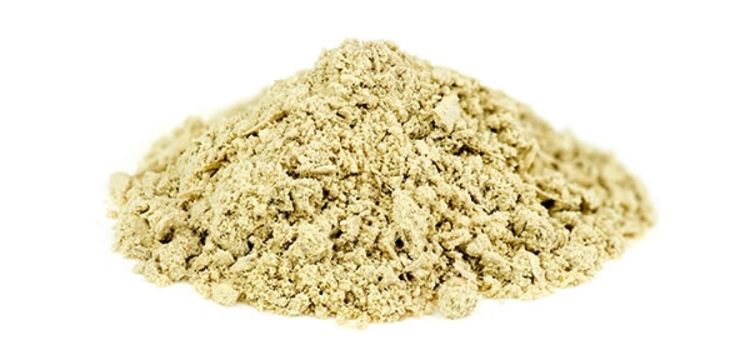BACKGROUND
Ingredient Type: Botanical, Extract
Also Known As: Piper methysticum, Kava, Ava pepper

Kava Kava is a plant found in the Pacific islands. It has been used traditionally in island cultures as part of political, social, and religious ceremonies. Its roots were often ground and used in drinks that were believed to have a calming and sedative effect.
The active ingredients of kava kava root are called kavapyrones (kavalactones). These likely have similar effects to alcohol for relaxation, talkativeness, and euphoria while maintaining mental clarity.
TRADITIONAL USES
Kava Kava is typically used in health supplements today to help ease symptoms of anxiety and to calm the mind.
WHAT DOES SCIENCE TELL US?
The acute effects of the herbal anxiolytic Kava-kava (Piper methysticum G. Forster) on emotional reactivity and cognitive performance were investigated in a double-blind randomized placebo-controlled trial involving healthy volunteers. The intake of a single dose of Kava extract (300 mg; oral) led to an increase in state cheerfulness. Kava improved the accuracy and the speed of performing the partial report and the item recognition task, indicative of a beneficial effect of the phytopharmacon on visual attention and short-term memory retrieval, respectively. Thus, unlike conventional benzodiazepine-type anxiolytics, which tend to impair cognitive performance and to increase the occurrence of negative affective states, Kava is a potent anxiolytic agent, which can also facilitate cognitive functioning and increase positive affectivity related to exhilaration (6).
A comprehensive research review was conducted during mid-2010 using search terms relating to kava and GAD. The authors of this analysis concluded that the current weight of evidence supports the use of kava in the treatment of anxiety with a significant positive result occurring in four out of six studies (7).
The mechanism of action of kava is still not been fully known. It is believed that multiple effector sites are involved. The anxiolytic and sedative effects of kava suggest that it potentiates γ-aminobutyric acid (GABA) inhibitory neurotransmission. One investigation showed that kavalactones mediate their effect through GABA in the limbic structures of the brain. Another study showed that kavalactones also inhibit voltage-dependent sodium and calcium channels in vitro, offering another possible explanation for the root’s antiepileptic and local anesthetic effects. Some have also hypothesized that kava exerts its effects through neurotransmitters such as dopamine and serotonin, but evidence for this hypothesis is still lacking (8).
Peak plasma levels occur 1.8 hr after oral dosing with kava kava extract. The elimination half-life of kavalactones is 9 hr. In rats, unchanged kavalactones and their metabolites undergo renal and fecal elimination (8).
SAFETY
Kava may be safe when used orally, short-term. Kava extracts have been used safely in clinical trials under medical supervision for up to 6 months.
There have been some concerns regarding possible liver damage linked to kava supplementation (See this note about the FDA consumer advisory). This appears to be very rare and according to the National Institute of Diabetes and Digestive and Kidney Diseases (NIDDK), “Based upon reported cases, the estimated frequency of liver injury due to kava is less than 1: 1,000,000 daily doses”.
Adult doses that have been studied include 50-100 mg standardized to 70% kavalactones 3 X daily/25 weeks, 400 mg 1 X daily/8 weeks; 1 to 2 kava extract tablets standardized to 60mg kavalactones 2 X a day/6 weeks, and calcium supplements + 100-200 mg kava mg daily/3 months (1,2,3,4,5).
REFERENCES
- https://www.ncbi.nlm.nih.gov/pubmed/12834011
- https://www.ncbi.nlm.nih.gov/pubmed/12807347
- https://www.ncbi.nlm.nih.gov/pubmed/12834011
- https://www.ncbi.nlm.nih.gov/pubmed/12807347
- https://www.ncbi.nlm.nih.gov/pubmed/9065962
- Hum Psychopharmacol. 2004 Jun;19(4):243-50. Enhanced cognitive performance and cheerful mood by standardized extracts of Piper methysticum (Kava-kava). Thompson R, Ruch W, Hasenöhrl RU. Department of Psychology, University of Hertfordshire, College Lane, Hatfield, Herts AL10 9AB, UK
- Kava: A Comprehensive Review of Efficacy, Safety, and Psychopharmacology Jerome Sarris, Emma LaPorte, Isaac Schweitzer.First Published January 1, 2011
- University of Chicago, Tan Center for Herbal Medicine Research, Herbal Resources.
See the National Center for Complementary and Integrative Health entry for kava, the Penn State Hershey Health Information Library entry for kava kava, this European Medicines Agency monograph on Piper methysticum, the RXList entry for kava, the WebMD entry for kava, or the Examine.com entry for kava for more information.









